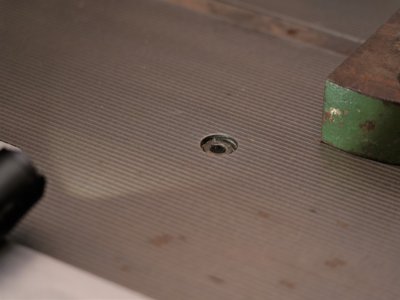- Joined
- Nov 25, 2015
- Messages
- 8,298
No to a camelback for a tablesaw. Guys, this is a contractor saw. No need to go to those lengths. A level would be good enough.
Any ideas on how the top got low in the middle ?
Is the table worn or poorly supported and the cast is sagging?I'm not sure how far out it is right this second, but I can say it's out enough that I suspect it's messing with the cut. It's been...painful...to get the blade dialed in. I too have a Delta saw (36-725).
I'd like to use it for both a saw and as a reference surface. I looked into getting it milled and/or ground, and it would cost almost as much in labor as the saw itself. It'd be one thing if I had the machines to do it myself, but I don't.
ETA: When I say reference surface I'm talking about woodworking, not metalworking. I'm not building rockets here, just furniture and some occasional weld art.
Is seasoning cast iron just letting it sit (sometimes for years) before milling it? To let it shift to a stable form so it doesn't shift in the future after machining?I agree with @MikeInOr, it's probably in their seasoning, and then milling
I love the corrugated top on my Italian sliding table saw!There's an advantage to having a corrugated plane (although many dispute that), I think it breaks the sticktion... but in a tablesaw, the lines would need to go parallel to the blade, and my swirls were mostly 90 to the blade. I sanded it smooth to my liking and use butchers wax to keep the table smooth as silk.

Are you having a hard time getting blade 90’ to the table?I'm not sure how far out it is right this second, but I can say it's out enough that I suspect it's messing with the cut. It's been...painful...to get the blade dialed in. I too have a Delta saw (36-725).
I'd like to use it for both a saw and as a reference surface. I looked into getting it milled and/or ground, and it would cost almost as much in labor as the saw itself. It'd be one thing if I had the machines to do it myself, but I don't.
ETA: When I say reference surface I'm talking about woodworking, not metalworking. I'm not building rockets here, just furniture and some occasional weld art.
